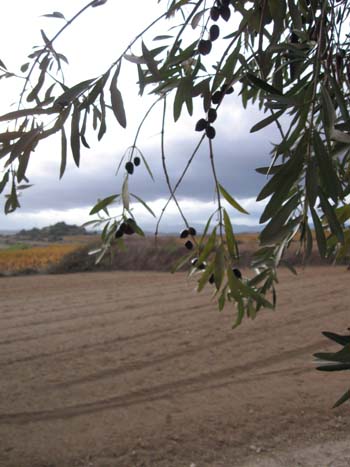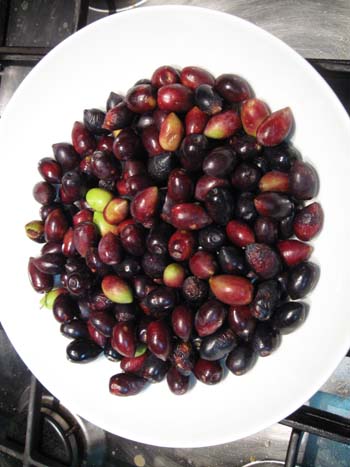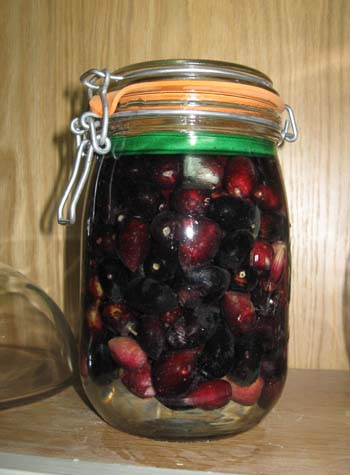Last week on an evening stroll we spotted an olive tree in a ditch and it was full of delicious looking plump black olives.
This is the first time we have seen a wild tree, obviously an escape from cultivation, with a goodly amount of ripe black olives on the branches.
Now I know that you cannot eat olives straight from the tree, they need to be cured first, but these looked so good I succumbed and tasted one.
It was disgusting.
I decided that this was one food for free we were going to have to miss out on, at least until I discovered how to perform the cure.
Then just this morning I was starting to try to sort out some cookbooks and came across Provencal Food by Patricia Wells and started to read through it (as is my wont) looking for ideas.
There, in her section on preserving, I found two different methods of curing olives- a dry salt cure (which involves pricking them all over with a tooth pick) and a wet cure, where you soak them in brine for 4 months or so.
And so to this evening, we decided to take a new route around the village- I will confess that I snuck a cotton bag into one of my pockets.
We met a man out stripping his olives from their branches and had a bit of a chat with him (his accent was harder than most so there was a lot of nodding and smiling on our side) but the gist of the conversation was that he had got a good crop this year and was taking them off to the mill to be turned into oil.
Further on , in a hedge we found a tree dripping with olives, most of which had fallen on the ground.

We decided that these were up for grabs so we gathered a few for the cotton bag- not too many just in case someone else decided that they had dibs on them.

At home we weighed them out, just 500g.

Deciding that the effort of pricking each individual olive was a bit energetic we decided to go for the longer brine cure, so we made our brine solution as instructed, poured this and the olives into a jar, used a lid full of brine to keep them submerged, sealed the jar and now we just have to wait for four months ; sometime around Easter, to taste and see if Ms. Wells knows her olives.
You will be informed at easter.

Comments
brian ronayne
on November 4, 2009I hope it’s not a metal lid. The salt may corrode the surface and you will have rusty olives. That would be the pits!
Martin
on November 4, 2009Good point Beau-Frere.
It was metal but I have now substituted a glass lid .
I’ll owe you an olive, all cured, should this work.
The comments are closed.